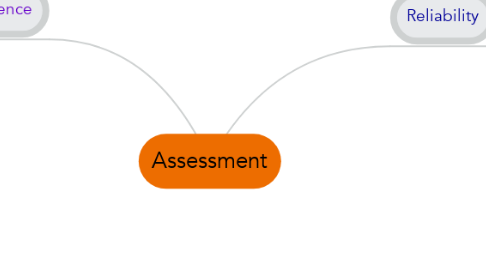
1. Reliability
1.1. Test-Retest or Stability
1.1.1. Test is given twice and the correlation between the first set of scores and the second set of score s is determined.
1.1.1.1. The Problem
1.1.1.2. The customer's voice
1.1.1.3. The project goals
1.2. Alternate Forms or Equivalance
1.2.1. Estimating reliability two equivalent forms of the test must be available, and the must be administered under condition as nearly equivalent.
1.2.1.1. Internal Consistency
1.2.1.1.1. items ought to be correlated with each other and test ought to be internally consistent.
1.2.1.1.2. Kuder-Richardson methods
2. Validity Evidence
2.1. Content Validity
2.1.1. Matches or fits the instructional objectives
2.1.1.1. Construct Validity
2.1.1.1.1. if its relationship corresponds well with some theory. A theory is a logical explanation or rationale for the interrelationships among the set of variables.
2.1.1.2. Content Validity
2.1.1.2.1. comparing test items with instructional objectives to determine whether the items match or measure the objectives.
2.1.2. Responsibilities include:
2.1.2.1. Assistance to Champions
2.1.2.2. Guiding and mentoring Black and Green belt members
2.1.2.3. Statistical tasks ensuring Quality
2.1.2.4. Ensuring practical application of the Six Sigma method across different functions and departments
2.2. Criterion-Related Validity
2.2.1. Concurrent criterion-related validity
2.2.2. Predictive validity
2.2.2.1. determined by administering both new test and established test to a group
2.2.2.2. determined by administering the test to a group of subjects then measure the subjects on whatever the test is supposed to predict after a period of time has elapsed.
